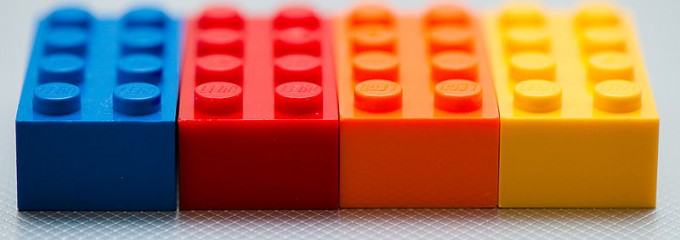5 Tips to Make a Bright and Well-Organized Playroom

Designing a playroom can be tricky. It has to be equal parts fun and functional, a line that’s not always easy to walk. That is, unless you’re an organizational expert like some of the bloggers we referred to for this list of five tips. They should help you to create a space that’s bright, fun, and welcoming, but never chaotic:
- Use chalkboard paint. Never again will you have to reprimand a child for drawing on the wall if you paint your playroom with chalkboard paint. The paint turns every surface it touches into a blank canvas, ready to be filled with colorful scribbles. Coat your playroom with chalkboard paint, and then provide plenty of chalk for your kids and their friends. Writing stories, drawing pictures, playing games—chances are they’ll find plenty of ways to stay entertained with chalkboard walls. What’s more, the chalkboard paint can actually help you keep the playroom organized, too. Denote where toy trucks should go (either with words or a picture, depending on the age of your child) and draw an arrow. Guide guests in the right direction of the bathroom with a pretty handwritten note. Show kids how to stack the games after they play with a hand-drawn illustration. The versatility of chalkboard walls makes them a great addition to any playroom.
- Make baskets or bins your new best friend. Of course, in order to draw an arrow to the toy truck bin, you’ll have to actually provide one first. Designate a set of shelves (or add some) for toys only. Fill the shelves with cute baskets or bins, preferably ones that you can label. Then make sure each container has a specific purpose. Keep them all at little-kid level, if possible, so that even your smallest child can learn to put away his toys once he’s done playing. Even if kids toss toys into the baskets haphazardly, at least the chaos will be contained (and invisible to guests).
- Improvise. Not every home has space for a separate playroom. If you fall into this camp, then improvise a makeshift play area. Try to still keep it within a designated area—the space between the back of the couch and a wall, for example. Use the same organization system in your makeshift playroom as you would in a full one: bins and baskets galore. Make sure your child understands that as soon as he or she is done playing, toys must immediately return back to their rightful home in the bin.
- File away DVDs. Although they’re undoubtedly the slimmest form of recorded video yet, DVDs can still take up a lot of space if they’re stored in a disorganized manner. Greatly reduce the volume of your DVDs by chucking the cases and instead stowing them in a filebox designed just for DVDs, like this one from the Container Store. Just make sure you clearly label each DVD’s pocket (and, perhaps, put them in alphabetical order) to make it easy to grab one later.
- Get creative with storage. Don’t be afraid to think outside the box when you’re organizing the playroom. If something makes your life easier, it’s a good idea. One mom, for instance, uses a plastic shoe holder (the kind that goes over the back of a door) to organize her daughter’s barbies. You could use the same organizer to keep track of costume jewelry, art supplies, and anything else small enough to fit in the clear pockets.
13 Pretty, Organized—and Stylish!!—Playrooms [Babble]
Get Organized: Smart Solutions for Playroom Clutter [Daily Parent]
Home Organization 101—Week #14: The Playroom [A Bowl Full of Lemons]
